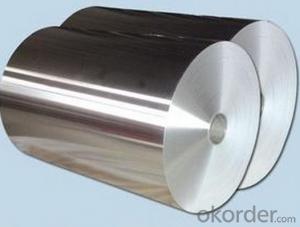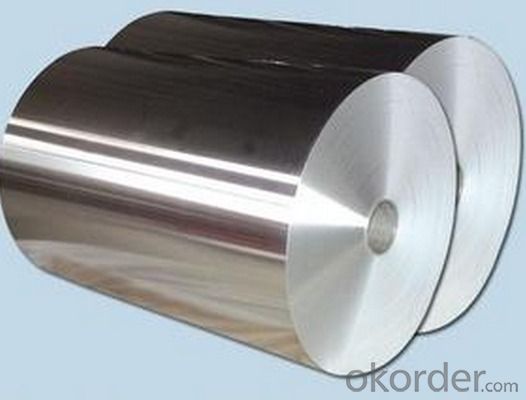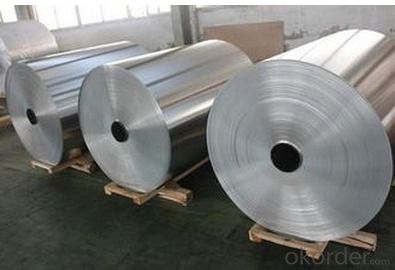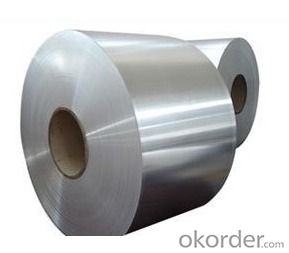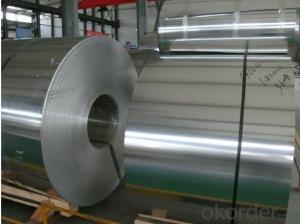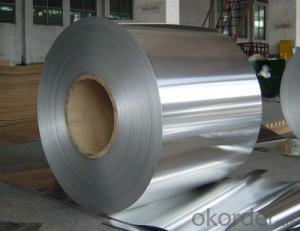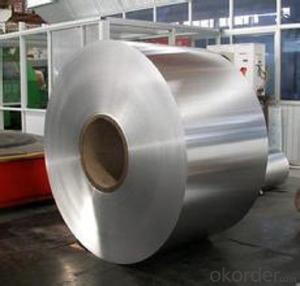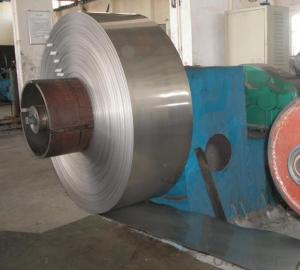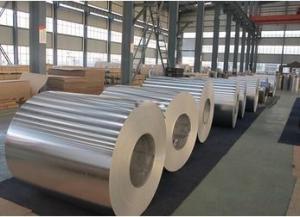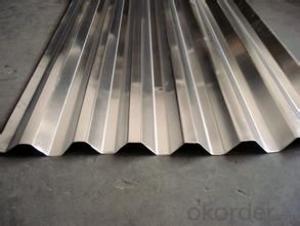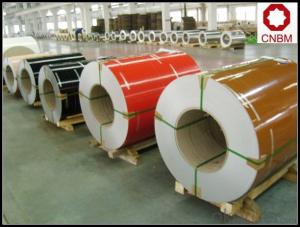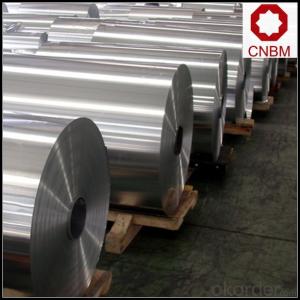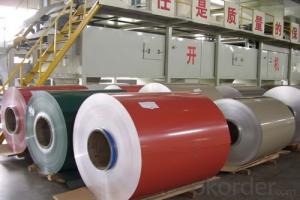6061 Aluminum Coil 1100 H14 for Composite Panel
- Loading Port:
- Shanghai
- Payment Terms:
- TT OR LC
- Min Order Qty:
- 1 m.t.
- Supply Capability:
- 5000 m.t./month
OKorder Service Pledge
OKorder Financial Service
You Might Also Like
Specification
Product Description:
Alloy:1100
Temper: O H12 H14 H16 H18 H24
Thickness(mm):0.2-10mm
Width(mm):100-2500
Length(mm):800-13000
Delivery lead time: 20-25 days
Packing: wooden/veneer pallet, wooden/veneer case
Unit Price/Payment: FOB, CIF, CFR,CNF
Payment term: TT, LC at sight, Westen union
Country of origin: China
Certificate approved: ISO9001, SGS,ASTM, ENAW
MOQ: 2.0-2.5 metric ton per size
Advantages
1.Anticorrosion and antirust
2. High credit and quality :SGS,ISO9001:2008
3. Professional manufacture and control
4. Prompt delivery
1100 Chemistry Composition | |||||||||
Element | Si | Fe | Cu | Mn | Mg | Cr | Ti | Zn | Al |
Standard Value | 0.25 | 0.40 | 0.05 | 0.05 | 0.05 | --- | 0.03 | 0.05 | remain |
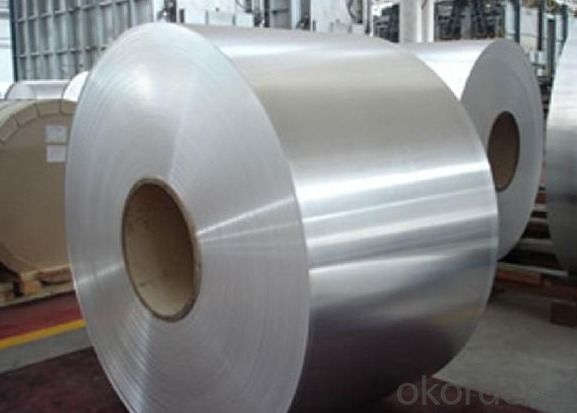
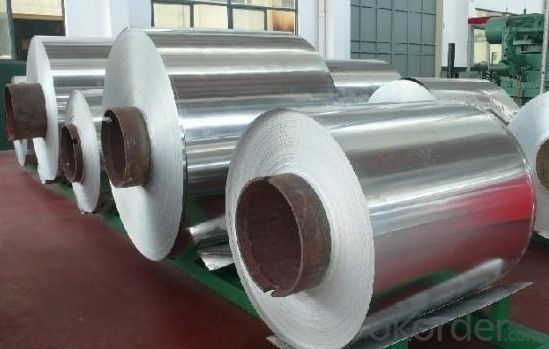
1100 Aluminum Coil
Low strength aluminum alloy has excellent corrosion resistance and satisfactory anodizing and conversion coating finishing characteristics. It is unmatched by any other commercial aluminum alloy in workability. Readily to welding, brazing, and soldering. Machinability is poor and tends to be "gummy". Non-heat treatable. Typical applications include chemical storage, processing equipment, kitchen utensils, and LED for channel letter ,general sheet metal work .
FAQ of Aluminium Coil 1100 h14 for composite panel:
1.Superior quality of raw material.
2.Reasonable and stable chemical composition.
3.Accurate tolerance.
4.Goode mechanical property.
5.We have the certificate of ISO9001.
- Q: Can aluminum coils be used in electrical transformers?
- Electrical transformers can indeed utilize aluminum coils. Although copper is typically the preferred material for transformer windings, there has been a growing trend towards utilizing aluminum due to its cost-effectiveness and lighter weight. Distribution transformers, which are smaller in size and operate at lower voltages, often employ aluminum coils. However, it is important to consider certain factors when using aluminum coils in transformers. Aluminum has a lower conductivity than copper, necessitating larger cross-sectional areas for the aluminum coils to compensate for this difference. Furthermore, aluminum has a higher coefficient of thermal expansion compared to copper, requiring proper precautions to accommodate the differential thermal expansion between the aluminum windings and other transformer components. In conclusion, aluminum coils can be suitable for specific transformer applications, but it is crucial to meticulously execute the design and manufacturing process to ensure optimal performance and reliability.
- Q: How long do aluminum coils last?
- The longevity of aluminum coils can differ based on various factors including maintenance, usage, and environmental conditions. On average, aluminum coils that are well-maintained can endure for approximately 15 to 20 years. Nevertheless, with appropriate care and consistent cleaning, certain aluminum coils have been reported to endure even longer, reaching up to 30 years or beyond. It is crucial to emphasize that regular upkeep, such as coil cleaning, inspection for damage or corrosion, and ensuring proper airflow, can greatly increase the lifespan of aluminum coils. Furthermore, elements like exposure to severe weather conditions, levels of humidity, and the quality of installation can also have an impact on the durability of aluminum coils.
- Q: Can aluminum coils be used in architectural applications?
- Yes, aluminum coils can be used in architectural applications. Aluminum is a versatile material that offers excellent durability, corrosion resistance, and a lightweight nature, making it suitable for various architectural uses. It is commonly used in roofing, cladding, facades, windows, and other decorative elements in buildings.
- Q: Do you think that stainless steel cookware with an aluminum core is safe? I am concerned about the links between aluminum and Alzheimers disease. Also, if anyone has heard of any health risks to using non-stick varieties of pans? I havent, but I would be curious to know if anyone else has.
- Using aluminum core pans should offer no heath risk. The cooking surface it stainless steel and the aluminum dose not come in contact with the food. Personally I would get ones with a copper core they are much better. Non-stick pans can give off a poisons gas if heated to high. The amounts of the gas aren't deadly to people but can cause problems for people with respiratory problems. It can also kill small bird if you have any living in the house.
- Q: How are aluminum coils used in the production of power transmission lines?
- Due to their unique properties and benefits, aluminum coils are extensively used in the production of power transmission lines. These coils, typically made from high-quality aluminum alloys, offer excellent conductivity, strength, and corrosion resistance. A key application of aluminum coils in power transmission lines is their use in manufacturing overhead conductors. These conductors transmit electrical energy from power plants to substations and distribution networks. Aluminum coils are used to create the conductive core of these overhead conductors because aluminum has lower resistance compared to metals like copper. This low resistance allows for efficient electricity transmission over long distances, minimizing energy loss and improving system performance. In addition, aluminum coils are lighter than copper coils, making them easier to handle and install. This characteristic significantly reduces transportation, installation, and maintenance costs of power transmission lines. Consequently, aluminum coils have become the preferred choice for overhead conductors in power transmission systems worldwide. Moreover, the corrosion resistance of aluminum coils ensures the long-term durability and reliability of power transmission lines. Aluminum naturally develops a protective oxide layer that prevents further corrosion, even in harsh environmental conditions. This corrosion resistance extends the lifespan of transmission lines, reducing the need for frequent repairs or replacements. In conclusion, aluminum coils play a vital role in the production of power transmission lines. They enable efficient electricity transmission, reduce costs, and provide long-lasting corrosion resistance. With these advantages, aluminum coils have become widely adopted in the power industry to enhance the performance and reliability of power transmission systems.
- Q: How are aluminum coils joined together?
- Aluminum coils can be joined together through a process known as welding, which involves melting the edges of two metal pieces and allowing them to cool and fuse. There are multiple welding methods that can be used to join aluminum coils, such as gas tungsten arc welding (GTAW), gas metal arc welding (GMAW), and friction stir welding (FSW). GTAW, also referred to as TIG (tungsten inert gas) welding, is a precise and versatile method commonly employed for joining aluminum coils. It utilizes a non-consumable tungsten electrode to create an electric arc that melts the base metal. Meanwhile, an inert gas shield, usually argon, is used to protect the weld zone from contamination by the atmosphere. GMAW, or MIG (metal inert gas) welding, is another frequently used method for joining aluminum coils. It involves a consumable wire electrode that is fed through a welding gun, along with a shielding gas to prevent oxidation in the weld zone. FSW is a solid-state joining process that utilizes a rotating tool to generate frictional heat between the aluminum coils. This heat softens the metal, allowing the tool to stir and join the materials without fully melting them. These welding methods are extensively utilized in various industries, including automotive, aerospace, construction, and manufacturing, due to their ability to create strong and dependable joints between aluminum coils. Furthermore, advancements in technology have led to the development of specialized welding techniques and equipment, ensuring efficient and high-quality joining of aluminum coils.
- Q: Never put oil in the water. Oil keeps the pasta from absorbing the sauce. Also add a little of the pasta water 3 Tbs. to the sauce. This helps sauce to adhere to pasta. The best remedy for pasta sticking. Use an aluminum stock pot. (tall pan). I don't know why but this works. I have using this stock pot for pasta for 40 years. I've tried stainless, non-stick, etc. they all stick. Except for the Aluminum.1 lb. of pasta, 4 qts. of water. 1Tbs. saltTurn burner to high,keep it therebring to boil then boil for 3 minutes, add 1 TBS salt, add pasta. Stir slowly 2 minutes, until the water boils. Cook tender enough for a fork to cut through but still a little firm
- Cooking in aluminum is not good! It leaches into the foods, you absorb it and it causes brain damage similar to parkinsons. I don't own any aluminum and I never will.
- Q: I want to make arrows for my bow that making, i have an idea of making a wooden mold and then finding the melting point of aluminum foil and melt it, prob is that i dont have anything to melt it with my moms oven goes up to only 500F and i need one up to 1240F
- Its relatively viable to soften aluminum foil. The Adiabatic temperature of a traditional gasoline flame is 1950C. The oven backside is in shut proximity to the flame so its temp will likely be a lot hotter than the air temp of the oven. Although you consider simplest half of this temperature to account for other temperature losses you are still 300C over the melting temp. While you first activate the oven the flame get turned on at a max price and stays on except the oven warms up. Because of this the backside of the oven will get much hotter than the oven environment. Remember shopping a substitute phase for the detachable oven backside alternatively of an complete oven. You could additionally are trying taking away the backside taking it outside and use a propane torch to remelt the aluminum and wipe it off with a bit of steel wool once its softened up.
- Q: What are the typical lead times for aluminum coil orders?
- The typical lead times for aluminum coil orders can vary depending on several factors. Generally, lead times for standard aluminum coil orders range from a few weeks to a few months. These lead times are influenced by factors such as the size and complexity of the order, the availability of raw materials, the production capacity of the supplier, and any specific customization requirements. It is important to note that lead times may be longer for larger or more specialized orders, especially if they require additional processing or finishing. Additionally, external factors such as transportation and logistics can also impact lead times. It is always recommended to communicate with the supplier directly to get an accurate estimate of the lead time for a specific aluminum coil order.
- Q: hey, my dad and i are working on painting our front door and the current piece of aluminum in front of it wont go with the new color. it doesnt look like it can be changed out so we are wondering, other than spray paint, what can you put on aluminum to make it turn permanently black. my dad mentioned gun blue, but that only works on steel. thanks
- Aluminum okorder / You could take it to someone that powder coats metals.
Send your message to us
6061 Aluminum Coil 1100 H14 for Composite Panel
- Loading Port:
- Shanghai
- Payment Terms:
- TT OR LC
- Min Order Qty:
- 1 m.t.
- Supply Capability:
- 5000 m.t./month
OKorder Service Pledge
OKorder Financial Service
Similar products
Hot products
Hot Searches
Related keywords
